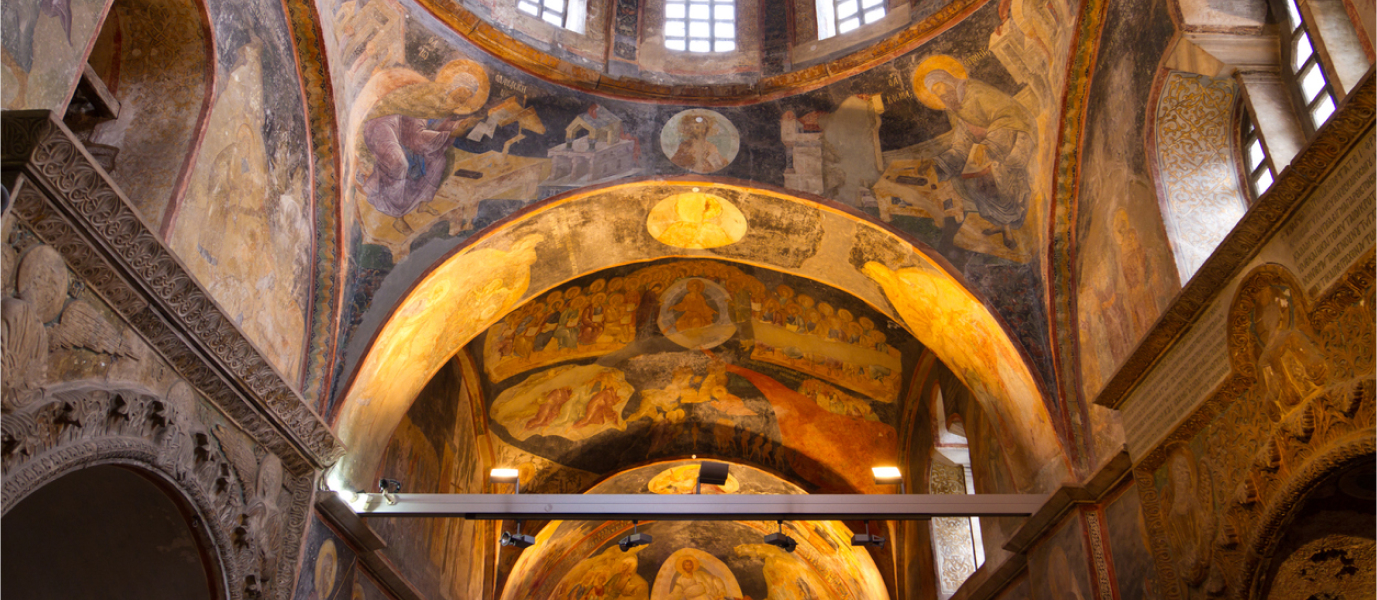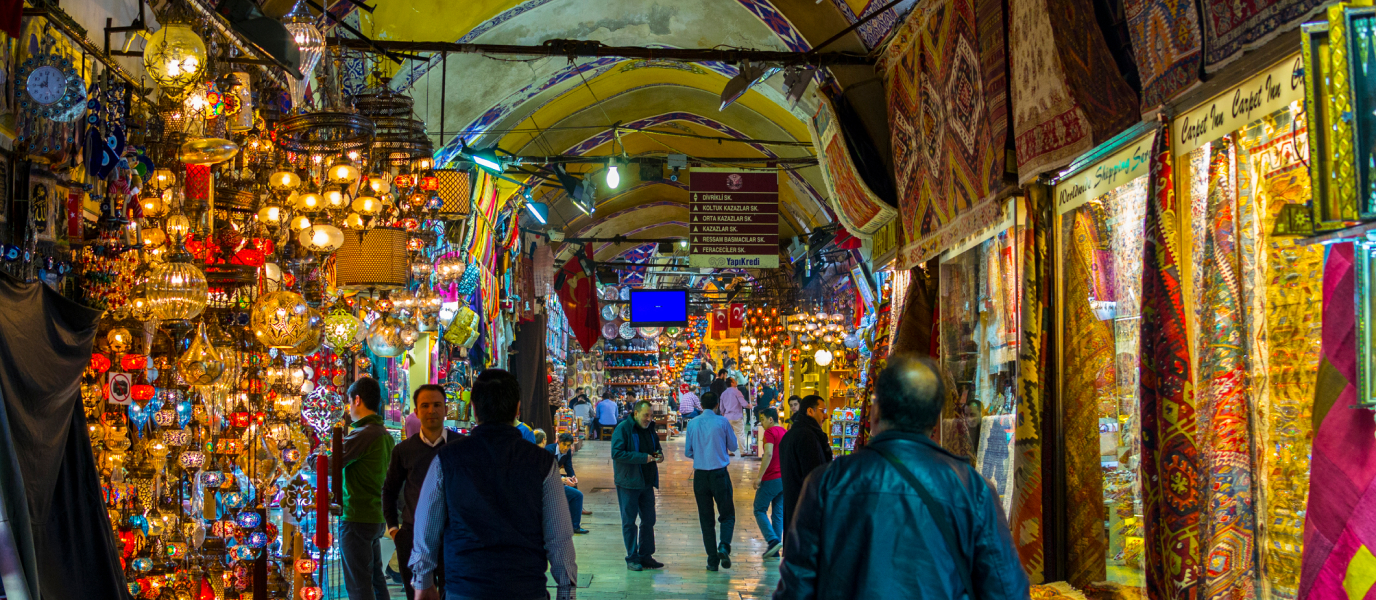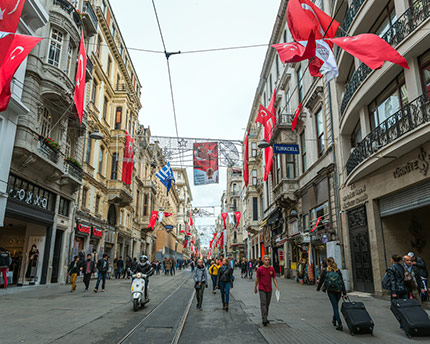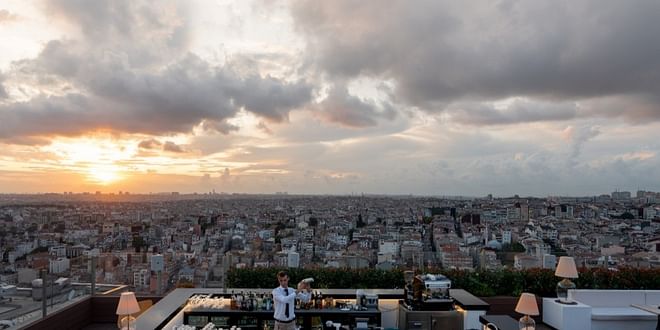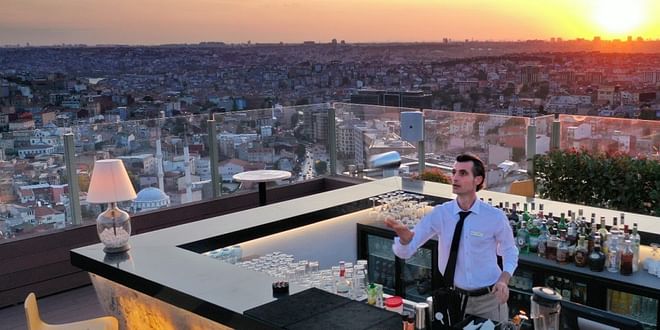However difficult times get, the Church of the Holy Saviour in Chora is more and more on the tourist trail. Firstly, because it is not located in the old quarter of Sultanhamet, but in the Edirnekapi district, to the east of the Golden Horn. Secondly, because the confusion about the names it has been given is somewhat spectacular.
On the one hand, both the names the Holy Saviour in Chora and Cora are accepted. On the other hand, as a mosque, it has been known as ‘Atik Ali Paþa Camii’, then ‘Kenise Camii’ and ‘Kariye Camii’ until it eventually became the Kariye Museum we know today. Perhaps, this is why so many have become confused on just looking up its name in the guides.
Moreover, the Edirnekapi neighbourhood is not exactly known for being safe, except in daylight. A run-down neighbourhood, which has charm and personality, has alleyways and bazaars with a vibrant local life. The Holy Saviour of Chora, in the Golden Horn, is a refuge here for some of the most stunning mosaics of all Byzantine art, quite a landmark for art guides.
It is because in the open-plan space of the Church of the Holy Saviour of Chora there is nothing else. There is just the gold of the mosaics, the frescoes and polychrome marble which decorate the walls and floors. The Church of the Holy Saviour of Chora has traditionally tried to keep a low profile, but the tables are turning.
The Church of the Holy Saviour of Chora, the history of a church in the outskirts
The construction of the Church of the Holy Saviour of Chora began in the fourth century, a time at which Constantine decided to create a “new Rome”, a new capital for the Empire. Indeed, that capital would be Constantinople. Here began the history of the Byzantine Empire. However, the Holy Saviour of Chora was raised outside the walls built by Constantine the Great. “Chora”, which means field in Greek, refers to the location in the outskirts of the town.
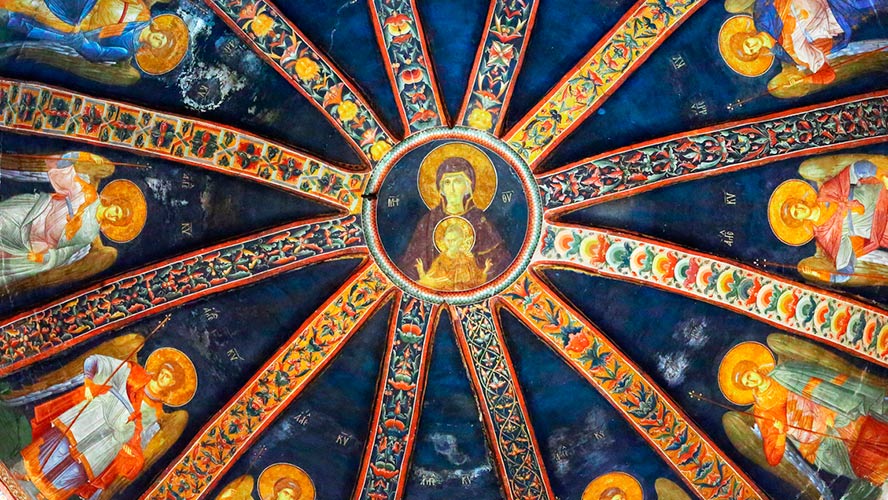
The new church was created as an annex building for a former monastery, which was already located in the outskirts of the city. It was not until a century later when Theodosius II built the outer walls, that the monastery was once again enclosed and sheltered by potential attackers.
From that time, the church of the Holy Saviour of Chora would undergo numerous renovations. The mother-in-law of the Byzantine emperor, Alexios I Komnenos, Maria Dukaina, was, however, the one who helped turn it into its present shape. This was in the year 1081. The temple was rounded off with a Greek cross plan, a prototype for other Orthodox churches. In total, the Holy Saviour of Chora was restored no less than five times, so its original form has faded.
At the start of the twelfth century, for example, an earthquake largely destroyed the church. Reconstruction took centuries, but during the process a change was made that would forever alter the destiny of the Holy Saviour of Chora. By this, we mean the frescoes and mosaics with which Theodore Metochites, poet, scientist, patron and auditor of the Royal Treasury was entrusted with the inner upholstery. Having spent his last years as a monk in the monastery, he was buried right there in the temple he took so many pains over.
In the final siege of Constantinople, in 1453, this church was part of the defensive walls in its very weakest part, in the west. The Hodegetria, the iconographic depiction of the Theotokus was taken there by the locals to pray for divine help. This was the Virgen Odihitria or Hodigitria. This was one of the three ways of depicting the Virgin in the Orthodox Church, in which the mother points at Jesus the child, indicating “This is the way to salvation”. In Europe, this portrayal is known as “Our Lady of the Way”.
However, the Virgin Mary could not help them this time. With the Ottoman conquest, the Grand Visir of the Sultan transformed the Church of the Holy Saviour of Chora into a mosque. It was then when the frescoes were plastered over to comply with the Islamic ban on depicting human or animal figures. In 1948, two members of the Byzantine Institute of America, along with other institutions funded its restoration and ten years later, the building reopened as the Kariye Museum.
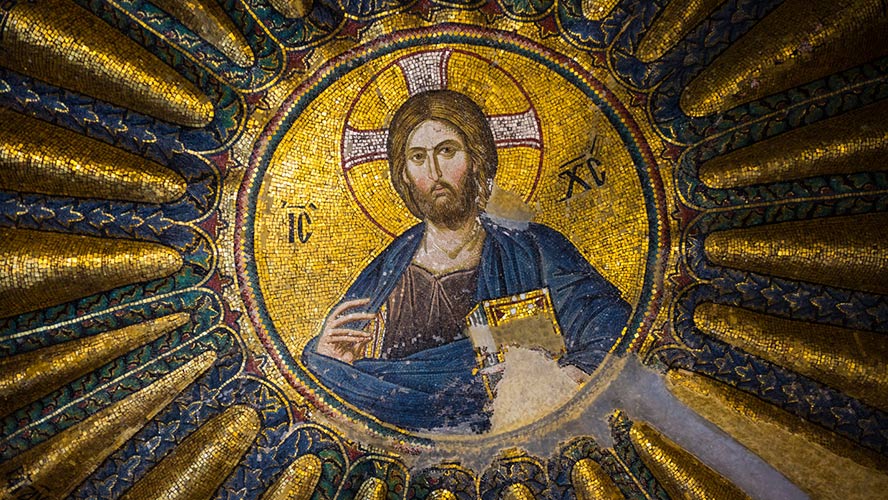
Mosaics and frescoes from the Church of the Holy Saviour of Chora
The Holy Saviour of Chora building is divided into three parts: the entrance or narthex, the main part or naos, and the side chapel or pareclesion. It also has six domes, two in the exonarthex, one in the paraclesion and two in the naos. Just like in other cases of Byzantine architecture, these grow in waves on approaching the central dome. This is not merely aesthetic: it acts to shift the weight of the largest dome towards the exterior.
The first we see on entering by the west gate is the exonarthex, the external part of the entrance. This was added by Teodoro Metoquites, one of those elements which lends the Church of the Holy Saviour of Chora such an unusual shape in many aspects. Here, we will mainly find scenes from the New Testament. It also has two medallions in both domes, depicting Christ on one of them and the Virgin Mary with the child on the other.
From the exonarthex or external narthex, we can access the inner narthex. Both spaces are connected to the Paraclesion to form a space in an L shape, which seems to shelter the central nave. The internal narthex is part of the original church. Inside we find a series of 17 mosaics which refer to the life of the Virgin Mary.
The paraclesion of the Church of the Holy Saviour of Chora is also the best example of this type of Byzantine architectural element which we have conserved. Inside we find the main frescos of the church, in which the splendour of the mosaics changes with the movement and expressiveness of the figures drawn. These were the funeral chapels.
Lastly, with a diameter of 7.7 metres, the central nave or naos has the largest dome in the building. In comparison, the decoration is more austere here. Note the polychrome marble and walls Apart from its frescoes, this space stands out for its semi-circular apse, with three windows that have stylish, depressed arches.
Kariye Museum
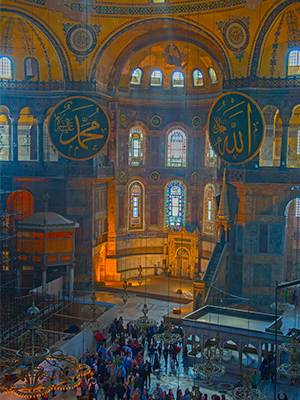
Each of the frescoes and mosaics in the Church of the Holy Saviour of Chora, like all Byzantine art, is brimming with symbolism. All the elements, from the characters and the themes chosen, are trying to tell us something. Also, the colours have a meaning here: orange may be the truth, portrayed by the flame of the Holy Spirit; white is purity; and purple is an attribute of royalty. Metaquites was also entrusted with decorating the entire temple with marble.
There are many outstanding representations in the Holy Saviour of Chora. The Series of the Life of the Virgin, for example shows us scenes from her wedding, her parents, the day she gave birth to Jesus as well as her last dream where she is surrounded by her son and the apostles (Dormition of Mary).
In one of the domes, Christ appears in a medallion held up by the evangelicals. Golden columns open out in a radial from the centre, each of which represents an ancestor of Jesus Christ from the time of Adam. In another, in stunning colour, the Virgin holds the child Jesus while pointing at him. Once again the radials open out from the medallion, spreading chequered mosaics or ones with floral designs that go to the top of the dome.
The Holy Saviour of Chora depicts the Day of Judgement, Jesus´s descent into Hell or the different stages of his life (with miracles, cures or episodes from the wedding at Cana). Their frescoes in the Paraclesion, the funeral crypts, however, seem to send a message of hope: everything here appears to be related to the triumph of the Resurrection.
In the “Anastasis”, for example, Christ appears to be stepping on the gates of hell, to where he has descended. So, it seems he is there to take out different characters such as Adam and Eve or the old Patriarchs. Satan, meanwhile, seems to have his hands tied. As we can see, these are not Medieval depictions, but moving figures with expressive emotions. Also, among so much meaning and symbolism, nothing is so moving as that which conserves its own beauty, its sense of style.





























































